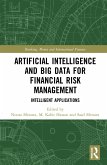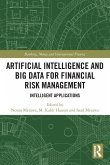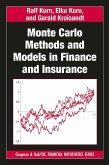Following the recent financial crisis, risk management in financial institutions, particularly in banks, has attracted widespread attention and discussion. Novel modeling approaches and courses to educate future professionals in industry, government, and academia are of timely relevance. This book introduces an innovative concept and methodology developed by the authors: active risk management. It is suitable for graduate students in mathematical finance/financial engineering, economics, and statistics as well as for practitioners in the fields of finance and insurance. The book's website features the data sets used in the examples along with various exercises.
This book presents statistics and data science methods for risk analytics in quantitative finance and insurance. Part I covers the background, financial models, and data analytical methods for market risk, credit risk, and operational risk in financial instruments, as well as models of risk premium and insolvency in insurance contracts. Part II provides an overview of machine learning (including supervised, unsupervised, and reinforcement learning), Monte Carlo simulation, and sequential analysis techniques for risk analytics. In Part III, the book offers a non-technical introduction to four key areas in financial technology: artificial intelligence, blockchain, cloud computing, and big data analytics.
Key Features:
Provides a comprehensive and in-depth overview of data science methods for financial and insurance risks.Unravels bandits, Markov decision processes, reinforcement learning, and their interconnections.Promotes sequential surveillance and predictive analytics for abrupt changes in risk factors.Introduces the ABCDs of FinTech: Artificial intelligence, blockchain, cloud computing, and big data analytics.Includes supplements and exercises to facilitate deeper comprehension.
This book presents statistics and data science methods for risk analytics in quantitative finance and insurance. Part I covers the background, financial models, and data analytical methods for market risk, credit risk, and operational risk in financial instruments, as well as models of risk premium and insolvency in insurance contracts. Part II provides an overview of machine learning (including supervised, unsupervised, and reinforcement learning), Monte Carlo simulation, and sequential analysis techniques for risk analytics. In Part III, the book offers a non-technical introduction to four key areas in financial technology: artificial intelligence, blockchain, cloud computing, and big data analytics.
Key Features:
Provides a comprehensive and in-depth overview of data science methods for financial and insurance risks.Unravels bandits, Markov decision processes, reinforcement learning, and their interconnections.Promotes sequential surveillance and predictive analytics for abrupt changes in risk factors.Introduces the ABCDs of FinTech: Artificial intelligence, blockchain, cloud computing, and big data analytics.Includes supplements and exercises to facilitate deeper comprehension.









